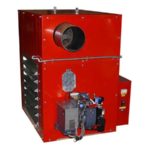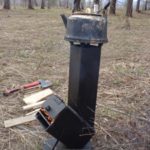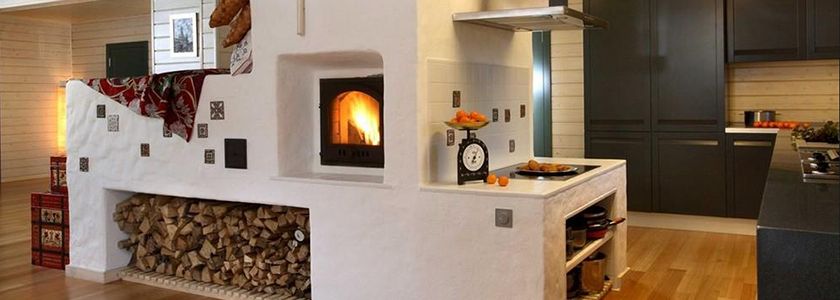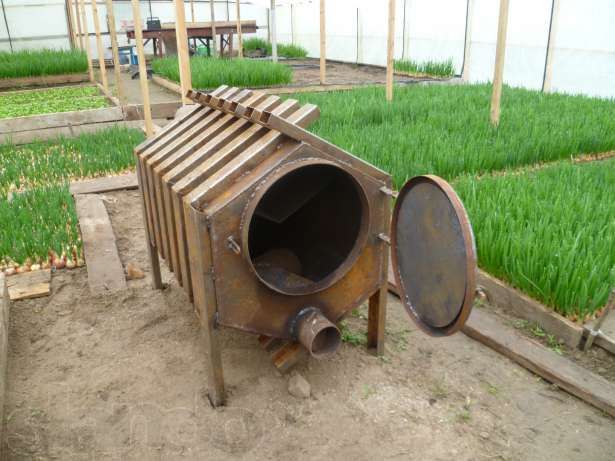Cleaning the oven
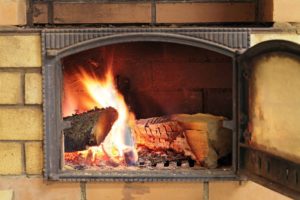 A fireplace or stone stove will inevitably become covered with soot over time, which can subsequently negatively affect the kindling or lead to a disastrous outcome. In addition, soot can spoil the appearance, staining light-colored stones with a black coating.
A fireplace or stone stove will inevitably become covered with soot over time, which can subsequently negatively affect the kindling or lead to a disastrous outcome. In addition, soot can spoil the appearance, staining light-colored stones with a black coating.
The content of the article
Why do you need to clean the stove and chimneys from soot?
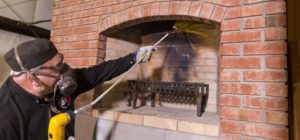 If cleaning is neglected, the thickness of soot and soot deposits can grow to several tens of centimeters. This may cause:
If cleaning is neglected, the thickness of soot and soot deposits can grow to several tens of centimeters. This may cause:
- rapid abrasion of the walls (their cracking);
- deterioration of draft and low smoke permeability;
- increased fuel consumption due to reduced efficiency;
- combustion process in a chimney.
How to understand that oven cleaning is necessary
The accumulation of soot and soot directly depends on the frequency of operation and the choice of firewood for ignition.
REFERENCE! Frequent use of damp logs accelerates the formation of blockages.
If smoke begins to pass through and accumulate in the room during kindling, and more firewood is required, this is evidence that it is time to clean the stove from soot and soot. Another dangerous indication of the need for furnace cleaning is sparks flying out of it.
You also need to pay attention to the smoke coming out of the chimney. If it is transparent or white, then there is no blockage, but when gray and black smoke appears from the chimney, then this is evidence of contamination of the stove and chimney. Cleaning is necessary when the light orange fire turns a bright orange color.
How to clean soot from a stove
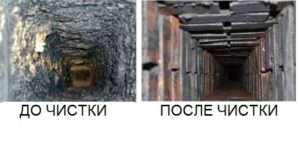 You can clean the oven in various ways. Among them there are chemical and mechanical methods. Chemical cleaning of the stove is carried out when the thickness of the soot reaches no more than 0.5 cm and is carried out using:
You can clean the oven in various ways. Among them there are chemical and mechanical methods. Chemical cleaning of the stove is carried out when the thickness of the soot reaches no more than 0.5 cm and is carried out using:
- Substances produced in enterprises and designed specifically to combat soot. They are produced in the form of powders, liquids and in the form of bars that imitate firewood. The composition of such mixtures includes aggressive components that affect plaque - ammonium sulfate, phosphorus oxide and others. Such products not only fight existing plaque, but also help avoid the formation of soot.
- Naphthalene. The powder is poured into a well-heated oven together with fuel. If naphthalene is in tablet form, then 1 tablet is used for kindling. Evaporating, naphthalene vapors affect the soot, leading to its destruction. There is an unpleasant odor in the room. Therefore, for cleaning soot from fireplaces and other open hearths, the product is in little demand.
- Aluminum. For preventive purposes, you can use an aluminum can, which is thrown into the stove for every tenth kindling.
- Aspen firewood. Place 2 medium-sized logs into the preheated oven. The combustion temperature of aspen wood is much higher than the temperature of the rest of the combustion material. This means that combustion in the firebox will take longer, which will lead to the combustion of soot deposited on the walls. The method is applicable only for small deposits, and is carried out 2 times during the week. If aspen firewood is used with large soot deposits, fire may occur.
- A mixture prepared independently at home. To do this, you will need to mix 50% coke (medium size), 30% copper sulfate and 20% nitrate.To clean the oven, you need to add at least 200 grams. mixtures. Cleaning with this composition is carried out once every 15 days.
- Potato peelings. 4–5 kg of dried potato peelings are added to the oven. The starch contained in them softens the plaque on the walls of the furnace well, which leads to the collapse of soot. You can use starch powder. Take 1 tbsp for the firebox. l. substances.
- Walnut shells. You can add no more than 3 liters of shells to the firebox at a time.
- Rock salt. 2 tablespoons of salt are added to the stove when it is lit. Vapors generated from combustion can soften soot and promote its peeling.
 Mechanical cleaning of the chimney is necessary at least once a year, especially before the heating season. This need arises not only due to soot deposits formed during the burning of wood, but also due to debris blown by the wind. In addition, during the warm season, when the stove is not in use, bird nests may appear in the chimney. Cleaning is also used when the thickness of the soot exceeds 0.5 cm.
Mechanical cleaning of the chimney is necessary at least once a year, especially before the heating season. This need arises not only due to soot deposits formed during the burning of wood, but also due to debris blown by the wind. In addition, during the warm season, when the stove is not in use, bird nests may appear in the chimney. Cleaning is also used when the thickness of the soot exceeds 0.5 cm.
REFERENCE! The stove is cleaned from above from the roof, and the fireplace is cleaned from below.
Cleaning is carried out using various tools. If plaque has severely clogged the pipe, it is recommended to heat the stove before the procedure with the addition of substances that soften the soot.
IMPORTANT! After the stove is heated with components that soften the soot, it is necessary to cool it and cover it with a damp cloth. Otherwise, the soot that has fallen off the walls will enter the room and greatly stain everything around it. The firebox door and ash pan must be closed tightly. The shipper opens to its full size.
After this applies:
- a core on a thick rope that will bring the soot down (the diameter of the core is no more than ½ of the chimney pipe opening);
- brushes, stiff brushes and other scrapers;
- a cable having a handle for rotation;
- strong rope.
ATTENTION! Chimney cleaning work should be carried out only in daylight and in favorable weather without wind or rain. The work is carried out using a roofing ladder, and if possible, for safety reasons, a protective fence is installed.
When using the core, you should remember that it cannot be rotated too much, otherwise it may damage the walls of the chimney. The load is used only for vertical lowering to pierce the soot layer. The combustion furnace is cleaned at the end of the process, when the chimney is completely cleaned.
Currently on sale you can find a vacuum cleaner that will quickly and efficiently cope with the task. But the disadvantage of the device is its high cost.


